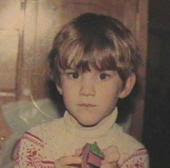Here is an excert of something I was working on when I should have been writing my Shakespeare paper.
______________________
I breathed heavily on the negative strip and polished it slowly. Any dust or scratches that appeared on the negative would show up on the print. You could make as many prints as you wanted from that one negative but once the negative was permanently damaged, that was it. That image, that black and white memory would be ruined and any print you made with that marred negative would reflect that.
When I got into the darm-room I made very sure that the door was closed tight so no outside light could get in. All of the photo paper was kept in a metal tin that resembled a sliding bread box except inside it had shelves where we put the paper. The room was dark, but there was some light on so you could see your way around. The lights were dark red so that they wouldn’t affect the paper. Also, red has a lower frequency on the electromagnetic spectrum, which makes it easier for your eyes to adjust. As far as our brain is concerned, red is the closest color to black. If that wave had a significantly lower frequency, it would be a radio wave. If it developed a higher frequency, it might be an X ray or a gamma ray. Red is the drop of point of the visible spectrum. If red’s frequency lowered the slightest bit, it would be heat.
I carried the photo paper carefully from side of the room to the other, making sure it remained untouched by any light that would darken the final print. Once exposed by the negative’s light from the enlarger, I carried the print to the developer solution where the liquids mixed and married to reveal an image. It showed itself slowly, a picture of a dilapidated house shying towards the surface. It is quite a beautiful and intimate process actually.
______________________
There is a Sherman Alexie reading tomorrow on campus that I am going to try to go to. He was on The Colbert Report last night.
Speak easy,Neil

No comments:
Post a Comment